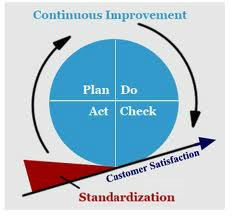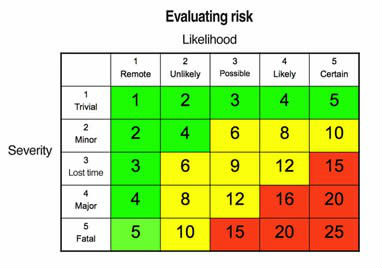In the past, the term quality referred specifically to the quality of a product. Nowadays, “quality” has a much broader scope. Quality means quality of the company organization and all related products and processes.
W. Edwards Deming defined a universal and simple description for quality management: PLAN – meaning setting objectives – DO – meaning applying good practices – CHECK – meaning measuring results – ACT – meaning continuously improving.

Deming wheel
- The Deming Wheel is the basis for any quality system. All quality standards are based on the Deming improvement wheel principles. In this sense, quality management (QM) is all about applying best practices and continuously improving.
- Customers must be in the center of the quality system. This includes not only the final customer that buys the product, but also internal customers in different processes.The aim of any enterprise is to deliver products and services that fulfill customer needs and keep them satisfied. And obviously this needs to generate profits.

From customer needs to customer satisfaction
Is this enough? Surely not.
Enterprises need to keep employees motivated and happy. They need to minimize impacts on the environment. That means that employee health + security and environmental regulations are fundamental matters when defining best practices.QM includes health, security and environmental concerns.
What about risk management? - Risk management should a part of any QM system. Identifying, assessing, treating and monitoring risks should be considered for each process when defining good practices.Risks can’t be measured, unlike other quality metrics. But risks should be continuously assessed, based on probability of occurrence and impact (when occurring). Controls need to be applied on a regular basis.

Example of a risk matrix
Today, risks are still not always considered at many companies. Financial consequences of un-mastered risks can be disastrous.
- Tracking relationships is key for a successful QM system. Improvement processes are closely interrelated. Improving continuously requires keeping track of these relationships.
Because clients are in the center of the QM system, having a quality relationship management system allows tracking of important interactions – like calls or emails – with clients and suppliers. - A QM system should include process automation with workflows. Information push shortens process lifecycles and increases customer satisfaction.
- Document management must be part of a QM system. Compliance documents, like good practices or instructions, need to be shared with end users. Tracking document versions, connectivity with Microsoft Office, and possibly having a document validation process are important document management features.
- Mobility has come to be an important feature of any QM system. As an example, the need for quality managers to audit external suppliers or customers requires a remote or offline access to the QM system.
At BPA Solutions, our quality engineers and IT experts have developed an integrated quality and risk management solution on the top of Microsoft SharePoint. BPA can help you achieve your goals when implementing a QM system.




